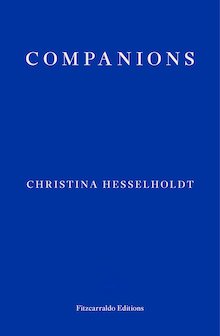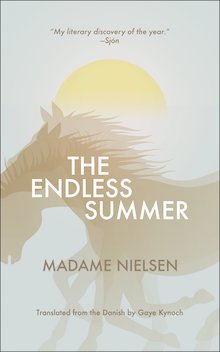The Bones [BTBA 2019]
Today’s BTBA post is from Sofia Samatar, author of A Stranger in Olondria and Assistant Professor at James Madison University.
Reading for an award jury is a special type of reading: very alert and very fast. I’m finding that the accelerated pace, combined with a certain sharpness in my eye, which has to read and judge at the same time, is enhancing my sense of the structure of a book.
It’s like developing a kind of x-ray vision. When I look back at the books I’ve read for the award, I can see the bones.

Companions by Christina Hesselholdt, translated by Paul Russell Garrett: Six characters. Their monologues make up the novel. It’s an explicit homage to Virginia Woolf’s The Waves, and the text has a wavelike motion, one voice drawing back in order to make room for the next, then recurring again, so that a pattern seems to rise. But what kind of pattern is this? It’s less regular than waves; it’s more like a crazy quilt. The dominant color would be Camilla, whose name arises often, and knits the book together by appearing, in bold, in section headings: CAMILLA AND THE HORSE, CAMILLA AND CHARLES, CAMILLA AND THE REST OF THE PARTY. Even though Camilla doesn’t appear for the first few chapters, you can feel the importance, the centrality, of Camilla. Maybe Camilla isn’t a block of cloth, but rather the thread that travels all over the quilt, stitching it together.
And what about Alwida? She’s the one of the six who appears least often. A small triangle of fabric in the corner. I read a review of the book that said there are five narrators, not six; the reason for this must be Alwida. She’s easy to miss. She’s also the least intellectual of the characters, the most active, practical, a doer, a traveler. What is the point of Alwida? Why create six characters and give them not only such different roles, but such different portions of a book? In the case of a crazy quilt, the amount of each fabric is determined by how much you have—that is, the condition of your rags. Maybe Camilla comes from a dress that wasn’t worn very often, so there’s a lot of it, while Alwida’s from something worn every day, outside, leaving just a few scraps.
(This explanation still doesn’t satisfy me; I keep thinking, why Alwida? Why so little Alwida? In orthopedic terms: a bone spur.)
That’s one example of the way I find myself looking at novels lately. Here, briefly, are two others:

The Hospital by Ahmed Bouanani, translated by Lara Vergnaud: A series of splinters branching out of a single point. This point, which bulges in a monstrous way, always producing new growths, is the hospital; the splinters are the psychiatric patients interred there.

The Endless Summer by Madame Nielsen, translated by Gaye Kynoch: A lovely adolescent skeleton, perpetually on the verge of change. It’s the story of a young boy, who may be a girl, staying at a dear friend’s house; no, it’s the story of the dear friend’s mother and her much younger lover; no, it’s the story of an extended family, adoption, and mistaken identities. Ultimately, it doesn’t want to take a final shape, to calcify, to die.

Leave a Reply